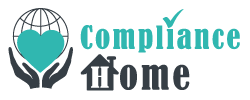
WiFi filtering for Internet and web pages
WiFi filtering for Internet and web sites is already required in some countries for some companies.
If places where it is not a legal requirement it should be considered as there are advantages of WiFi filtering for web sites for businesses and organizations that operate WiFi networks. For instance, restricting access to certain types of website content can secure networks from malware and ransomware, and ensure all users enjoy safe browsing activity.
This article outlines why there is more to WiFi filtering for web sites than blocking sites of an adult nature. It elaborates on the advantages of WiFi filtering for companies and groups, and covers some of the main reasons why an increasing number of enterprises are now using WiFi filtering for Internet access points. But first, we will look at the most good reason for configuring WiFi filtering – Internet security.
One of the main aims in using WiFi filtering for web sites is to improve readiness for cyberattacks. The healthcare and finance industries are often targets for attackers keen to obtain Personally Identifiable Information (PII) for identity fraud, while the energy sector is often targeted by hacktivists. The retail industry has also been targeted by cybercriminals looking to obtain access to POS systems in order to obtain customer credit card details.
Hackers have leveraged the fact that employees are often the weakest link within an organization´s cybersecurity defenses and are increasingly using phishing and social engineering techniques to gain access to computer networks. It may be simpler to trick employees into revealing login credentials and installing malware than to try to break through firewalls or find security vulnerabilities but, with WiFi filtering for Internet security, employee access to websites containing malware, ransomware, spyware, and adware can be prevented.
WiFi filtering for web sites has become increasingly crucial for tackling this attack vector, and malicious websites are constantly being created to spread malware. Therefore, along with using blacklists and SURBL/URIBL filters to block access to known unsecured websites, WiFi filtering for Internet security should also incorporate a category-based filtering mechanism. Categories of websites known to be unsafe include Peer-2-Peer (P2P) file sharing websites, FTP sites, and video download websites. These categories can be properly blocked, along with any newly created malicious website that falls into these categories.
It is also possible to use WiFi filtering for Internet and web sites that host Adobe Flash videos. Flash-based attacks have been widely used by hackers to deliver malware recently via web sites that host third party advertising. Hackers have been known to incorporate links to malicious websites in web adverts, some of which have been placed on seemingly safe sites such as Yahoo and MSN. WiFi filtering for Internet and web sites can prevent these adverts without limiting access to the website on which they are hosted. WiFi filtering can also be used to prevent installing unsafe attachments such as executable files and screensavers. These file types are commonly used to hide malware downloaders.
Although many sectors now consider WiFi filtering for Internet security to be a vital extra tier of defense against cyberattacks, there are still plenty of opportunities for cybercriminals. Next in this article, we elaborate on WiFi filtering for businesses and offices, Internet content filtering for students in universities and schools, and web content WiFi filtering for hotels, restaurants and bars; but we would like to quickly illustrate some other scenarios in which organizations and individuals are at risk from having a poor security posture. These include, but are not restricted to:
- Retail outlets that supply WiFi for their customers,
- Medical clinics and hospitals,
- Hotels, motels, resorts and casino outlets
- Airports and other transport hubs
- Rail and bus networks.
ComplianceHome is a registered trademark. Copyright © 2025 ComplianceHome. All rights reserved.